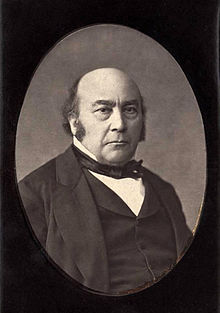David Gruby | |
|---|---|
 David Gruby, ca. 1880s | |
| Born | 20 August 1810 |
| Died | 14 November 1898 (aged 88) |

David Gruby (20 August 1810 – 14 November 1898) was a Hungarian physician born in the village of Kis-Kér (now Bačko Dobro Polje, Serbia) to a Jewish farmer.[1] He received his doctorate in Vienna and performed scientific research in Paris.
Gruby is remembered as a pioneer in the fields of microbiology and medical mycology. Most of his important work was done during the 1840s, when he reported that human disease could be caused by fungi.[2] In 1841 he described the fungus associated with favus, a discovery that was independent of Johann Lukas Schönlein's (1793–1864) findings. Later, the fungal parasite was called Achorion schoenleinii in Schönlein's honor.
In 1842 he described a microscopic cryptogam (Trichophyton ectothrix) that is associated with a dermatological disease known as sycosis barbae. Gruby also discovered Candida (Monilia) albicans, the cause of candidiasis, and in 1843 he described a fungus (Microsporum audouinii) that is the cause of a type of ringworm. This fungus was named after naturalist Jean Victor Audouin (1797–1842).
Gruby also discovered a parasite in the blood of frogs he called Trypanosoma sanguinis. During the early years of anaesthesia, he performed important experiments with chloroform and ether on animals.
- ^ Geoffrey Clough Ainsworth, Introduction to the History of Medical and Veterinary Mycology, Cambridge University Press (2002), p. 13
- ^ Homei, A.; Worboys, M. (11 November 2013). "1. Introduction". Fungal Disease in Britain and the United States 1850-2000: Mycoses and Modernity. Springer. p. 6. ISBN 978-0-333-71492-8.